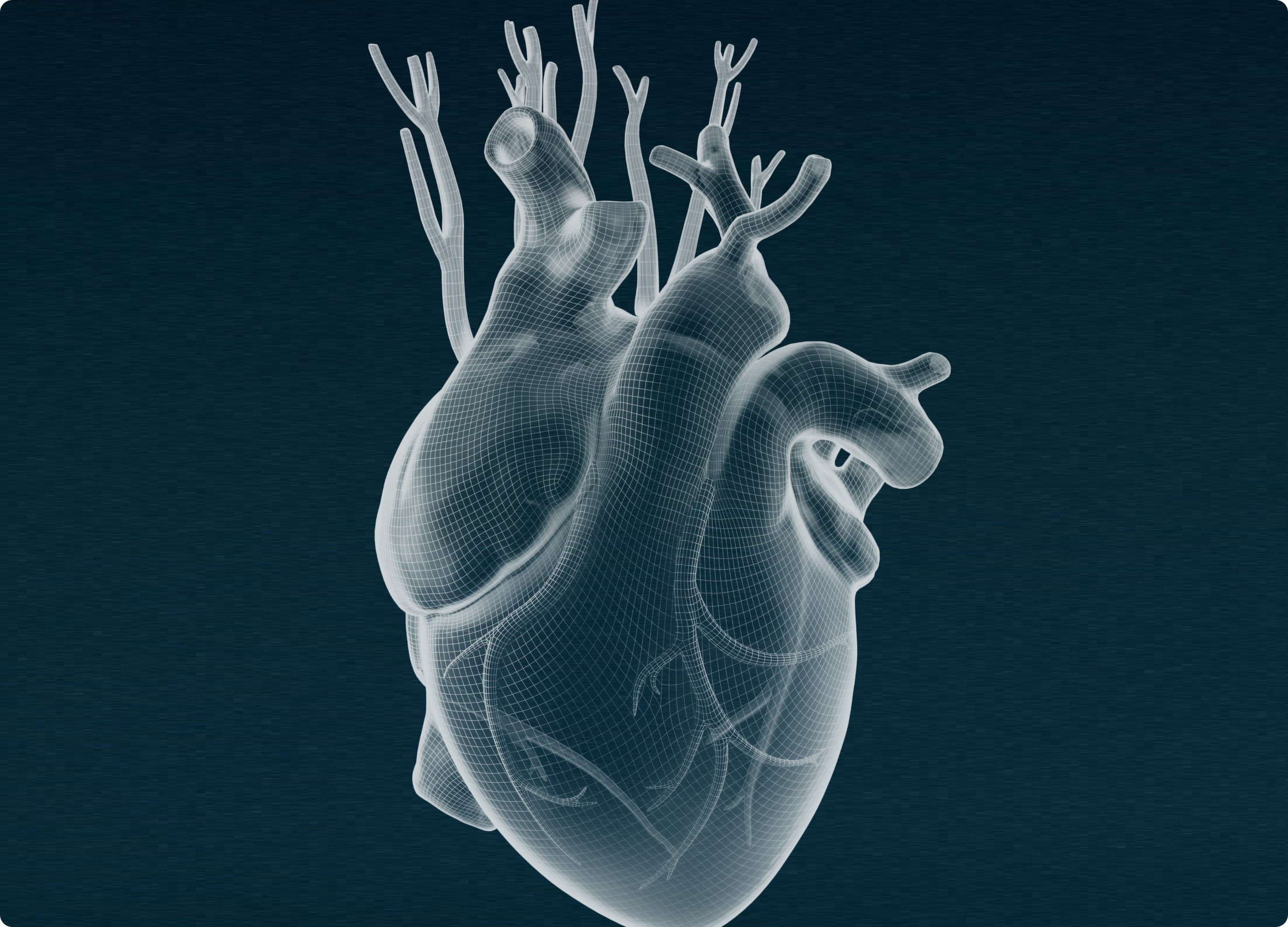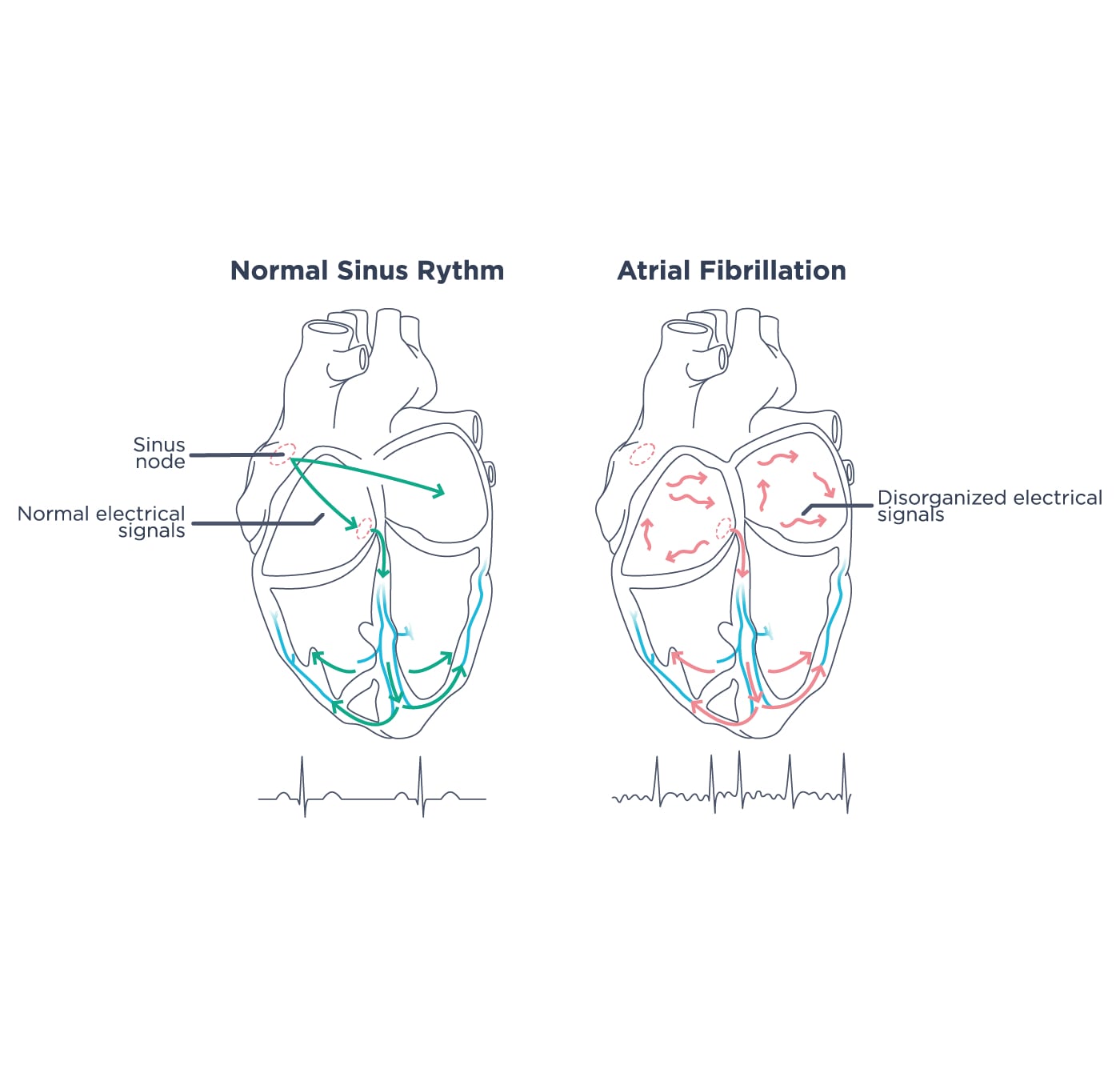
How do you know you have sleep apnea
Learn how Withings sleep tracking can help indicate if you have sleep apnea. Discover the signs of obstructive sleep apnea and how a sleep...
Before you continue
Website version do not match with your country.
Pricing and product availability may vary by region.


Atrial fibrillation (also called AFib or AF) is the most common form of irregular heart rhythm. This arrhythmia can lead to many complications, such as blood clots or heart failure. Learn more about AFib symptoms, risk factors, and how you may be able to better manage this condition via early ECG detection.

💡 In short:
Atrial fibrillation (AFib) is an anomaly of the heart’s electrical activity. Normally, the heart contracts and relaxes to a regular beat based on electrical impulses to pump blood. These signals starts from the sinus node in the right atrium.
In atrial fibrillation, the electrical impulses are disorganized and scattered throughout both atria.
As a result, the heart beats too quickly and irregularly, and blood is not pumped efficiently, which can lead to a decreased blood flow and oxygen throughout the body.

Cardiologists define 3 forms of AFib episodes according to their duration and frequency:
In this first and sudden episode, AFib comes and goes, and stops on its own.
In the second stage, AFib progresses. It lasts more than a week and can become permanent.
Also called long-term persistent AFib, in the third and most severe stage, AFib progresses until the heart’s normal rhythm cannot be restored.
According to the European Society of Cardiology, one in four people who are 40 years old or over are likely to develop AFib.
AFib tends to be asymptomatic. During its paroxysmal early stage, atrial fibrillation is more difficult to detect, because it might arise during short episodes that cannot be diagnosed. However, common symptoms include:
• Palpitations
• Shortness of breath
• Low blood pressure
• Faintness
• Fatigue or lack of energy
In most cases, people do not experience those symptoms, and AFib may remain untreated. Doctors might discover it when testing for other conditions.
Many people develop AFib for unclear reasons. However, it is important to consider the following risk factors:
Advanced age
Atrial fibrillation affects up to two percent of the younger population of the United States, but rises to nine percent for those 65 years or older. Source: Circulation
Hypertension
According to the European Society of Cardiology, people who already have high blood pressure are at higher risk for AFib.
Valvular heart diseases
Also called VHD, they affect how the heart valve function to regulate blood flow and are independently associated with AFib.
Thyroid disorder
A dysfunctional thyroid will disturb the production of hormones. This can lead to atrial fibrillation.
Obesity
Overweight contributes to the onset of atrial fibrillation. The Clinical Electrophysiology Journal states that "incremental increases in BMI are associated with a significant excess risk of AFib."
Lung disease
Chronic obstrusive pulmonary disease may also be independantly associated with atrial fibrillation.

How do you know you have sleep apnea
Learn how Withings sleep tracking can help indicate if you have sleep apnea. Discover the signs of obstructive sleep apnea and how a sleep...

Healthy body composition: What it is and how to improve it
What is body composition? Learn how to measure it, what defines a healthy body composition, and tips to improve your fat, muscle, and water...

Perform an ECG
Discover the electrocardiogram feature in our ScanWatch range
AFib is associated with a 1.5- to 1.9-fold mortality risk after adjustment for the preexisting cardiovascular conditions with which AF was related.
When a heart contraction is either too fast or too uneven, it does not completely squeeze the blood out of the atria, causing blood clots. The blood clot can be pumped out of the heart to the brain and block off the blood supply to an artery in the brain. This is commonly called a stroke.
AFib can cause the heart to beat so fast that it doesn’t fill up with enough blood to pump out to the body.
Atrial fibrillation is also associated with cognitive decline. Source: Journal of the American Heart Association
The only way to efficiently diagnose AFib is to record an electrocardiogram (ECG). This painless and non-invasive test can record the electrical activity of your heart.
However, because the early episodes of AFib are temporary, signs of AFib may not be recorded during a doctor’s visit. That is why our ScanWatch range can help, as you only have to wear it to let it detect AFib.
The treatment goals for AFib are to reset the heart’s rhythm and prevent blood clots in order to decrease the risk of strokes. To control the cardiac rhythm, doctors may use medicines such as blood thinners, administer electric shocks, or proceed to the ablation of the heart tissue causing atrial fibrillation.
Depending on the situation and type of AFib, the cardiologist will define the best strategy to treat atrial fibrillation patients. However, the longer a patient has AFib, the less likely it is that doctors can restore a normal heart rhythm.
Join millions of users who are improving their health with Withings. Sign up to discover the entire Withings ecosystem, our latest products, and exclusive offers.
By registering, you agree to receive advertising e-mails from Withings. However, if you change your mind, you can unsubscribe at any time.

